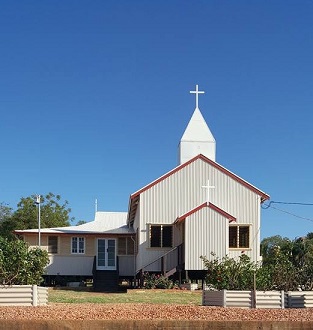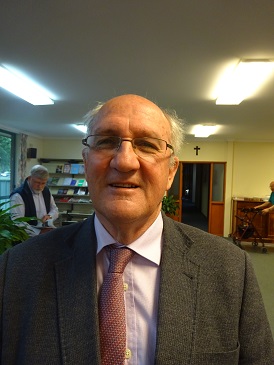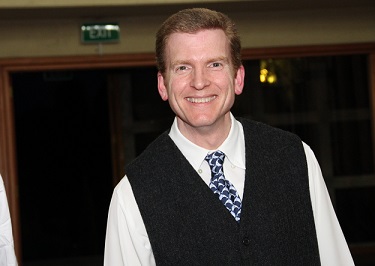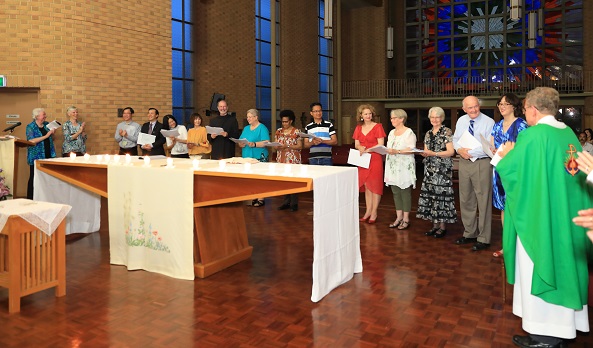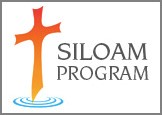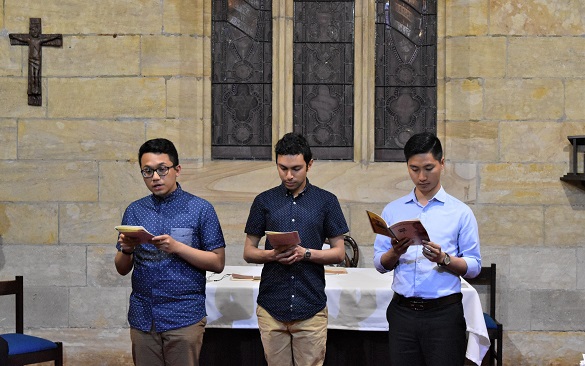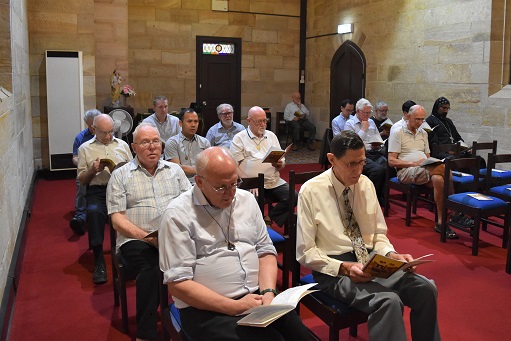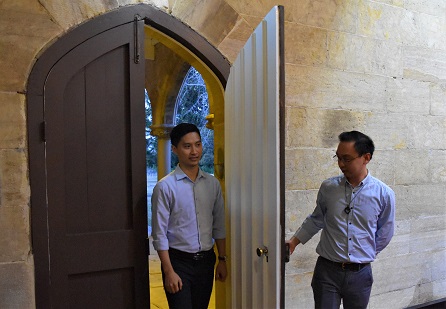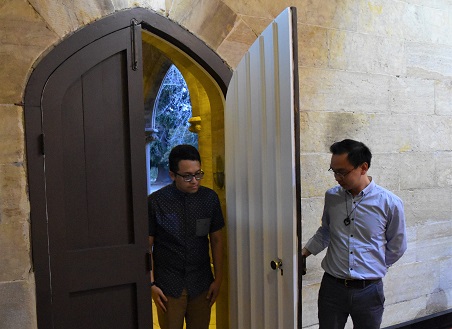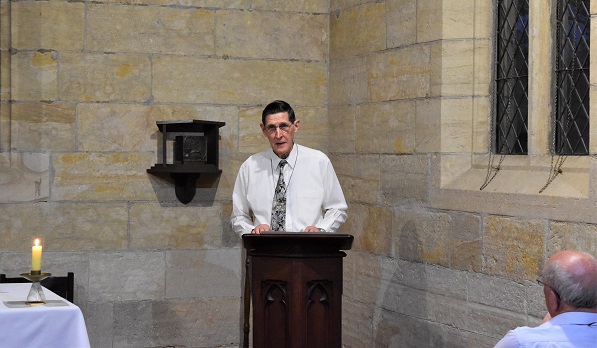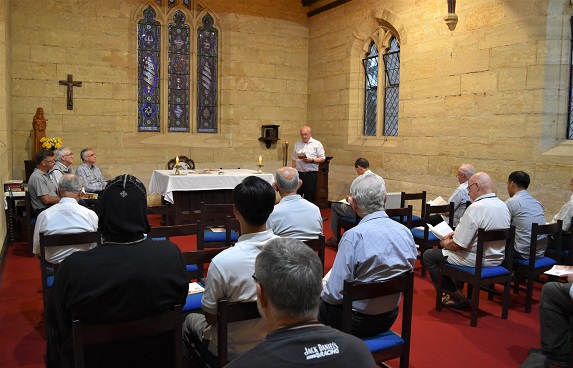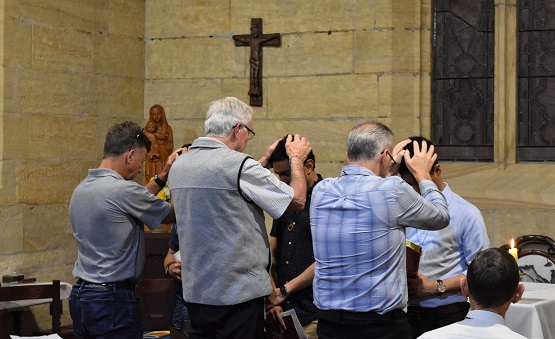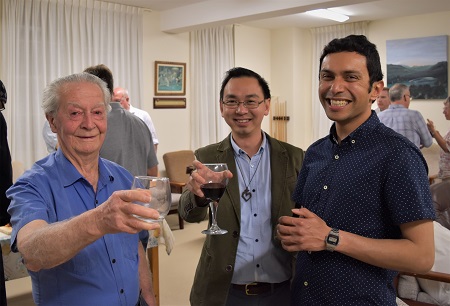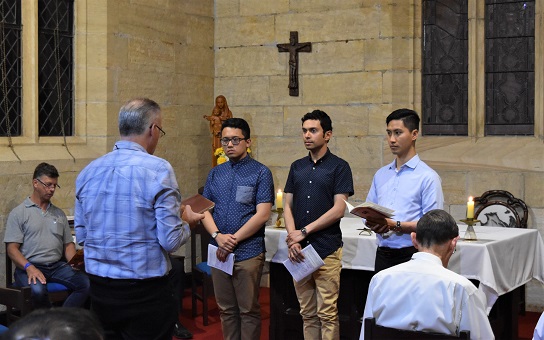Peter MALONE
DO YOU KNOW ABOUT THE MSC HISTORY IN TENNANT CREEK, NT?
DO YOU KNOW ABOUT THE MSC HISTORY IN TENNANT CREEK, NT?

Googling turns up some news and history items.
During the 1930s Tennant Creek was in the midst of a gold mining boom. In 1934, to cater to the growing non-Aboriginal population, approval was granted for the establishment of a Catholic Mission Station in the Tennant Creek area.
The church building was originally constructed in 1904 in Pine Creek, which is 760 km north of Tennant Creek, but by the mid-1930s the church had fallen into disrepair. In 1935 Reverend Father W.J. Dew, M.S.C. of the Darwin Parish, was asked by Bishop Francis Xavier Gsell to assess the needs of the Tennant Creek parishioners, who numbered approximately 300. Dew later wrote:
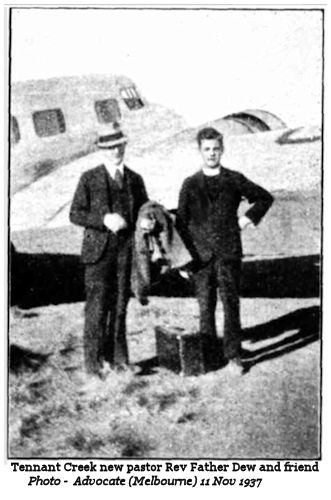
I was appointed to Tennant Creek in 1935. I went to Darwin in 1936 and discussed the whole situation with Monsignor Gsell. He suggested me taking the P.C. (Pine Creek) church to T.C. (Tennant Creek). So there and then I arranged for Brother Andrew Smith M.S.C. (skipper of our Mission Boat serving Bathurst Island and Port Keats) to come with me to Pine Creek for a fortnight and managed in that time to dismantle the Church that was there.
Father Dew undertook fundraising for the project in Adelaide and was reportedly frustrated by the lack of generosity he encountered there, particularly on one occasion when a wealthy woman replied to his request for a donation by simply saying, "Give my love to the miners".
The dismantled church was railed to Birdum and then trucked the remaining distance. The trucks carrying the dismantled church were caught in floods at Daly Waters and parts of the loads were left on the roadside. Spread out along the route for some time, it became known as the "longest church in Australia". While the church was reconstructed, mass was held "in the residence of some local Catholic". The relocation was expensive, and by the time it was opened on 21 November 1937 by Bishop Raible had cost "many hundreds of pounds". The church was reconstructed in a different layout that in its original location. An office and verandas were later built "on two sides to serve as accommodation for the priest".
During World War II the church became a social centre for troops travelling the north-south road. Father Dew stayed in Tennant Creek throughout the war and was Chaplain to the 55 Australian Camp Hospital in 1944.
Rev. Father Wilfred Dew had been a science master and was very fond of books. This young man was appointed to Tennant Creek in 1935, after only ten years of teaching, and evangelised the mining community. He had abandoned the comfort of a professor’s chair to plunge into the bush with neither church nor presbytery and only a car for his home, and his ministry to support his spirit.
For the first six months mass was celebrated in the homes of some parishioners. The dining table was pushed to the end of the room, clothes were removed from nails, and the best was made of the circumstances. The small congregation knelt on the ant-bed floor (possibly Weber’s residence at the Rising Sun Mine). Also Scott’s Hall, next to the Tennant Creek Hotel was made available, but this was unsuitable as the dance which was held there on Saturday nights left the hall in confusion.
Father Dew designed the building which was re-built differently then had been at Pine Creek, which he described as virtually a 60 foot by 20 foot hay shed. The building comprised of the Church and Sacristy, which was the office and Confessional, front and inside verandas with a bathroom and windmills, one to pump rain water to the overhead tank. There were three water tanks on site providing a total of 5,400 gallons. Wooden louvres were imported from Queensland whilst all church and residence furniture was brought up from Adelaide. Father Dew designed the church seats and alter which were made to order. Windows, wall and ceiling lining, guttering and all plumbing was also purchased interstate. A wind driven generator provided electricity by charging batteries. The majority of the costs for the building were borne by promoters from the southern states plus locally by the Dwyer and Weaber families and also T Kelley. The relocation of the church was expensive, the overall cost was over £3,000.
“The Longest Church in Australia” In the early 1930’s Tennant Creek was granted approval for the establishment of a Catholic Mission Station. Father Moloney M.S.C. came from Alice Springs at irregular occasions to celebrate mass.
The Reverend Father Wilfred J. Dew, Missionaries of the Sacred Heart (M.S.C.) of the Darwin Parish, was asked by Bishop Francis Xavier Gsell to assess the needs of the Tennant Creek parishioners, who numbered approximately 300.

Northern Standard (Darwin NT 1921:1955) – Tuesday 29th September 1936
The Reverend Father Dew cleared the town this morning in his motor van for his headquarters at Tennant Creek. Brother A. A. Smith of the mission staff is making the journey with the Reverend gentleman to Pine Creek, where the Catholic Church at the mining township is to be pulled down and removed to Tennant Creek. The materials will be trucked by rail to Birdum and then by motor truck to the site of re-erection.
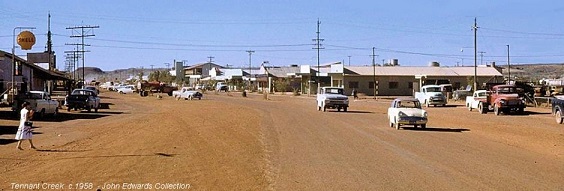
So from an the abandoned mining centre of Pine Creek, no less than four hundred and fifty miles distant, Father Dew brought a church whose iron framework was dismantled in two weeks.
It was then railed from Pine Creek to Birdum (Larrimah) and the Tennant Creek trucking firm of Dave Baldocks carried out the move the remaining distance, in conjunction with Snowy Renfrey.
The trucks carrying the dismantled church were caught in flood waters at Daly Waters and parts of the load were unloaded when the trucks became bogged and left by the roadside, some being washed away.
Because the building was spread out along the route between Pine Creek and Tennant Creek, some four hundred and fifty miles for quite some time, it became affectionately known by locals as the:- “longest church in Australia”.

Parish Priests during the 40 years of MSC presence:
1935 – 45 … Rev. Fr. Wilfred J Dew MSC
1945-46 … Rev. Fr. A Guest MSC
1947-51 … Rev. Fr. John Cosgrove MSC
1951-54 … Rev. Fr. Dallas J Cox MSC
1954-55 … Rev Fr. A.J. Collins MSC (relief)
1955-56 … Rev. Fr. Dallas J Cox MSC
1956-57 … Rev. Fr. Fred Mordaunt MSC
1957-70 … Rev. Fr. George Vincent Taylor MSC
1970-71 … Rev. Fr. Maurice McPhillamy MSC
1972-73 … Rev. Fr. John Fallon MSC
1973-74 … Rev. Fr. John O’Carrigan MSC

MSC INTERPROVINCE COLLABORATION: US -WITH FR JOANE SIGARARA AND FR CORNEILLE BOYEYE
MSC INTERPROVINCE COLLABORATION: US - WITH FR JOANE SIGARARA AND FR CORNEILLE BOYEYE.
FR JOANE SIGARARA MSC – FROM FIJI, PACIFIC UNION. MILITARY
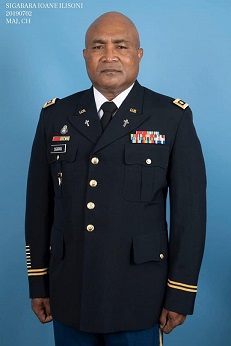
|
Two photos from 2019, at Mass and in uniform for Veterans’ Day. We delved into the website archives and found two items. We thought them well worth reproducing. The first is from 2019: During Mass on December 8, 2011 (the Feast of the Immaculate Conception), Fr. Ioane Sigarara, MSC was sworn in as an officer (captain) in the US Army. Fr. Ioane is a Missionary of the Sacred Heart from Fiji who has been living and working in the United States for several years. He previously served as pastor to St. Anthony Parish in Hillsdale, MI and, more recently, has been working at St. Charles and St. Helena Parish Church in Clio, MI. Major Don Michael, who is also a deacon at St. Anthony, served as the witnessing officer. Fr. Ioane will be serving as an Army Chaplain. Now that he has been sworn in, his next step is to attend 12 weeks of officer training school. Congratulations Fr. Ioane and may God bless you in this new ministry. From the US MSC site. |
The second is from 2014.
The Reverend Ioane Sigarara of Saint Anthony Catholic Church in Hillsdale, once a Fijian military man, will enter the United States Navy in January to serve as a chaplain.
Ioane grew up in Fiji-the islands where there are only two seasons: cool and dry or warm and wet. Ioane said he would describe Fiji as the place where fish and octopus are eaten raw for increased flavour, electricity is almost non-existent and "running water" is the creek out back.
Another unique characteristic of the Fiji Islands is the love of rugby that they inherited from British colonisation. Ioane said he played quite a bit growing up, and when he came to Hillsdale in 2007, he visited the college rugby club practice to provide insight into how to better their rugby game.
"He was an incredibly holy and personable man – and a great rugby player," Ian Faley '10, captain of the college rugby team in 2007, said. Ioane's passion was not limited to this sport, however. He said the Catholic community in Fiji is very strong, and even as a young boy, Ioane said he desired to become a priest.
As soon as he graduated high school, Ioane joined the military, as was expected by his family. His dreams of becoming a priest were put on hold. Ioane spent six years in the Fijian Navy. His duties ranged from serving on a minesweeper vessel to guarding the Israel/Lebanon border. During his time in the navy, Ioane said he felt again the call to pursue priesthood.
As he encountered countless young men and women returning from battle permanently scarred by the sights they had beheld, Ioane said he also developed a passion for counselling. Ioane returned home to become a priest.
Ioane said that this was a revolutionary decision in Ioane's family since everyone in his family was either a teacher or part of the military. They had trouble accepting this decision, he said. "They thought I was mad to become a priest," Ioane said, Nevertheless, Ioane followed through with his education, keeping his ties with the Fiji Armed Forces so he could minister as a chaplain.
On a visit to see his uncle – who was assisting at St Anthony – Ioane said he was introduced to Hillsdale. In August 2007, his uncle returned to Fiji, and the Rev. Tom Butler, current pastor at St. Anthony, asked Ioane to take his place.
Ioane said that, within the first five minutes of their meeting, Butler convinced Ioane to stay in Hillsdale. Ioane has remained here for the past few years, leaving a few times to return for short sabbaticals to Fiji.
But the next chapter of his life will unfold in the Navy.
And in 2019 the photos.
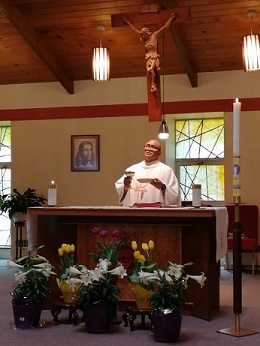
________________________________________________________________
FR CORNEILLE BOYEYE, FROM CONGO, CHAPLAINCY

On Saturday, October 20, 2019, Fr. Corneille Boyeye, MSC, was unanimously recommended for board certification by the National Association of Catholic Chaplains at a national interview which was held at Mercy Hospital in Rockville Centre. Fr. Corneille has been working and studying for this achievement for three years.
Ordained in 2002, Father Corneille was Pastor of Sainte Marie Madeleine Parish in Kinshasa, DR Congo before coming to the United States. He is a member of the MSC’s Pennsylvania Community and resides at St. Patrick’s Parish in Smithtown, NY.
___________________________________________________
MSC APPOINTMENTS II - THE SEQUEL, PHOTOS AND ALL
MSC APPOINTMENTS II - THE SEQUEL, PHOTOS AND ALL

Recently we posted a list of appointments in the Province for 2020.
Now, it seems by popular demand, the release of the sequel! Photos and all.
- Barry Smith has been appointed to a new position of the Australian Province- Manager-Province Properties and maintenance.
- Dominic Gleeson has been appointed Superior of St Mary’s Towers, Douglas Park
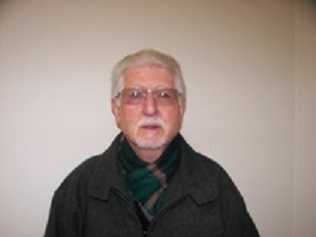
- Pat Sharpe has been appointed to Kensington Monastery
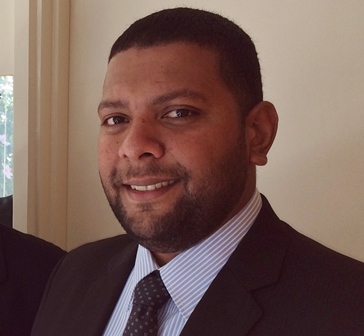
- Iokimi Vunivesilevu has been appointed Superior of Canberra Community
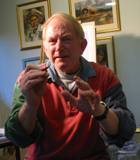
-
- Paul McCormack has been appointed for 1 year to Henley Beach Parish

-
- Tan Nguyen has been appointed for 3 months to Henley Beach Parish and after which he will be on Parish and Mission Supply
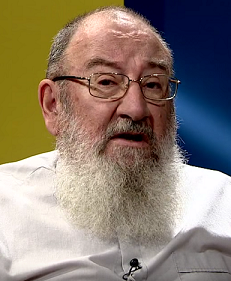
-
- Roger Purcell has been appointed for 3 years as Director of MSC Mission Office
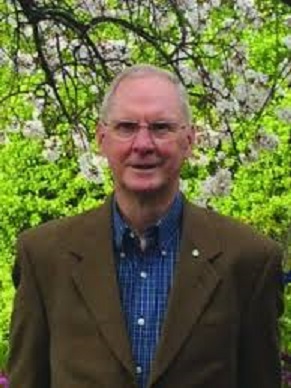
-
- Paul Beirne has been re-appointed for 1 year as Director of Heart of Life Spirituality Centre

THE ANNALS, 130 YEARS OLD - LOOKING BACK, PART 1, 1889-1930
THE ANNALS, 130 YEARS OLD - LOOKING BACK, PART 1, 1889-1930
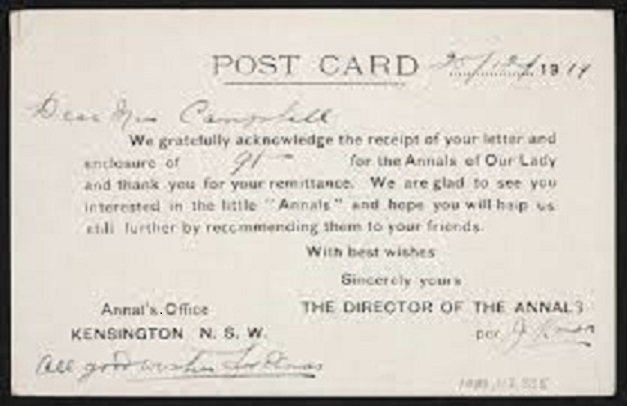
Keeping accounts in1911
The Australian Annals, Annals of Our Lady of the Sacred Heart, began publication in 1889. This month we celebrate 130 years.
To commemorate this anniversary, we will have this article today, another next week and a third the week after.
This history was written for the Annals, now Annals Australasia, by former Provincial, Fr John F. McMahon MSC.
When an historian tries to write something about the Editors of Annals over the past one hundred years he finds it difficult to identify the people who held the position! The Missionaries of the Sacred Heart who were responsible for publishing this magazine had a policy of requiring editors to remain anonymous and until very recent times, the editor never signed his name, except on letters he wrote personally to contributors or subscribers On occasions when the editor was away his understudy would take over, again as an anonymous writer, and it is not always easy to work out who this was.
To complicate the issue further, there was for many years a separate 'Director of Annals" who saw to the business side of the production and sometimes was identified with the editor. Daniel Hogan, who founded the Catholic Boy Scouts, was editor for a short time when Michael Forrest was overseas; and John Lee acted as editor during Fr. Treand's absence. Archbishop Sir Virgil Copas when he was a newly ordained priest, with no hint of his later importance in the Church of Papua New Guinea was a Bursar/ Director of Annals for a short time in the 1940's. The present arrangement with the editor being also the director, is a much better arrangement as far as the chronicler is concerned.
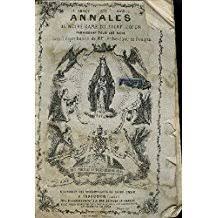
An old cover, French Annales
The first issue of Annals appeared in December 1889. The driving forced behind it was a pioneer Missionary of the Sacred Heart, Emile Merg, who came to Sydney in 1887 and was appointed as curate to Randwick Parish until he left in 1909. Being a French-speaking priest he depended very heavily on a gifted volunteer trained teacher in the parish school at Randwick named Mary Agnes Finn. It was Miss Finn who translated into English much of the early material in Annals and who wrote many a short story and the longer serial stories for so many years to come. Her brothers were also well-known commercial printers in the city of Sydney and became before long the early printers of Annals.
When Pierre Treand became Superior of Randwick and Provincial of the MSC in Australia, he took over Annals and he too was very dependent on Mary Agnes Finn as well as on a rising younger Catholic journalist, Miss Agatha le Breton, also a teacher, who wrote under the pen-name "Miriam Agatha". These two dedicated and gifted ladies did most of the writing for Annals and were something more than mere contributors. Were it not such an ugly word I should be inclined to refer to them as "editresses".

In 1914 the Office of Annals was transferred to the Sacred Heart Monastery at Kensington, then the seminary of the MSC in Australia and the Provincial House of the Congregation until 1977.
To mark the transition, an Australian editor was appointed for the first time, Michael Davit Forrest. This very gifted priest, who was involved in all the burning questions of the day both inside and outside the Church, built up the circulation especially among young people, and also succeeded in embarrassing his Superiors by his forthright views on the Anglo-Irish question which at that time was hotly contested in the local papers. One must admit, however, there was little of a controversial nature in the pages of Annals. Michael Forrest spent a year or so overseas and wrote all the time as an absentee Editor under the pen-name of "The Wanderer". (See "Michael Davitt Forrest (1883-1970), controversial third editor of Annals Australia", in Annals, May 1989, PP. 22- 26.)
Eventually Michael Forrest, after a half-hearted attempt to try his vocation as a Benedictine in Ireland (and a later try in America which also proved unsuccessful) joined the American Province of the Missionaries of the Sacred Heart. His place was taken by Eric Dignam, a young priest recently ordained who brought a completely new approach to the editorial chair.
Eric Dignam had been ordained in 1924 and from the outset of his life as a priest and in his ministry among people showed a striking personality. He was very musical, had a fine tenor voice much in demand for liturgical functions, and was an engaging conversationalist, with a great love of books and literary pursuits.
He was in great demand for retreats especially retreats for boys with whom he had a quite unusual rapport. He was to spend many years doing this sort of work.
With the cover printed in color and all copy printed on art paper, with a wealth of illustrations and line-drawings and a lay-out that showed the hand of a professional somewhere in the printing shop, Annals made quite an impression without any increase in price. To be continued...

MSC INDONESIA, A VISIT BY THE SUPERIOR GENERAL
MSC INDONESIA, A VISIT BY THE SUPERIOR GENERAL
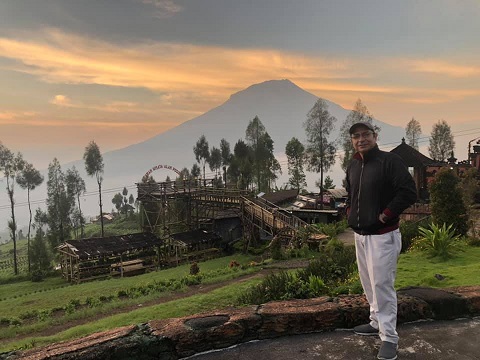
Yesterday’s post paid tribute to our Asian confreres and their assistance to our province.
Our neighbouring province, Indonesia, the largest in the congregation deserves our gratitude as well – especially in sending chaplains for the Indonesian communities, especially in Sydney. They also gather for Masses at Our Lady of the Rosary Church, Kensington, where Alo Lamere MSC is parish priest.
The Superior General, Abzalom Alvarado Tovar recently visited the province for the first time. Here are his reflections.
Diversity, multiculturalism, and at the same time unity are words that resonate in my being as I think of these two months of accompaniment to the MSC Province of Indonesia.
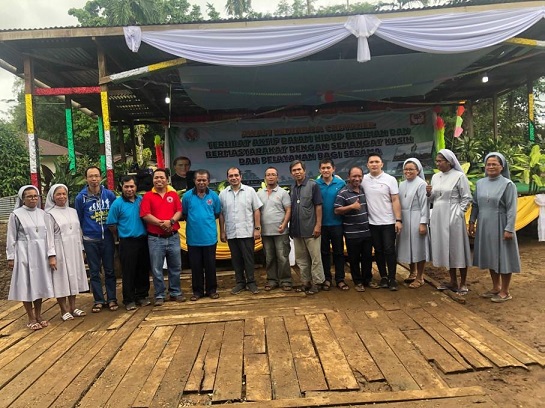
MSC Mendiptana
There is a great MSC richness that I could feel while coming to know so many of our MSC confreres, who come from an immense cultural diversity. And I underline the richness because every day I had the opportunity to meet new MSC confreres, each with great values and engaged in so many different apostolic ministries.
To feel the greatness in the quality of the missionary dedication and commitment, but also the numerical greatness of the MSC Missionary force in the midst of the more than 18,000 islands that make up this immense country.
The province of Indonesia is made up of 345 MSC, distributed in five Districts together with the provincial and formation communities. The MSC Districts are as follows: Central Java/South Kalimantan; Mollucas; West Papua; Sulawesi/Kalimantan East.; Jakarta/Western Kalimantan-Sumatra.
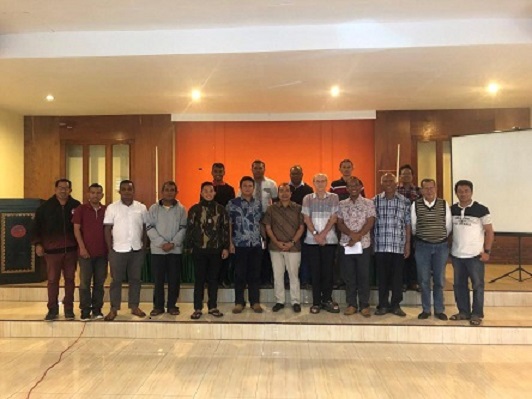
MSC Mollucas
Each District has so many strengths and riches especially in its members that it is impossible to summarize them here. Of course, there are great challenges that each person and therefore each MSC District is called upon to face. There is so much life emerging from within each confrere, from within the different apostolic works and, above all, from within each Culture. I was also able to experience in a special way the source of life that emerges through the witness of the lay brothers and sisters. The Chevalier Family is very much alive and in some places especially committed to the mission.
We are accustomed as MSC to conceive of this Province for its Ad Gentes missionary activity, which is certainly so valuable and admirable. But now God has shown me the immense size of its Ad Intra mission within Indonesia. There are many needs to be met.
Community life has to remain a priority, as well as initial and ongoing formation. Leadership formation at all levels is also important, especially at the level of District Leadership Teams. Trying to do Generative Listening with the confreres, I felt the cry of the need for ongoing formation based on processes of integral human development.
Another wonderful element is the abundance of vocations, it gives much hope to feel and listen to the life that cries out in the hearts of so many young MSC in formation. They invite us to a truly prophetic commitment after the witness of our confreres killed at Langgur in 1942. The heritage of their martyrs is helping our brothers in Indonesia face, with prophetic and missionary Spirit, this moment of transformation that we are living today as society and as Church.
Worthy of mention is the accompaniment in the reconstruction of life in Palu, Central Sulawesi, as well as the different commitments to the defense of the environment and human rights especially in West Papua. One should also mention the commitment to the integral development of people, and the promotion of education, rehabilitation and Credit Unions, among others.
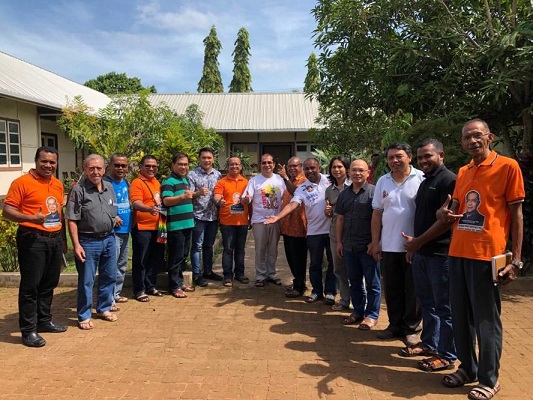
I confirmed that being a minority in Indonesia has been an opportunity rather than a weakness. Being a minority as Catholics, the members have developed an authentic spirit of family, fraternity and mutual support. The parishioners know each other and help each other.
Thank you to all the confreres of this wonderful MSC Province for their witness and support in carrying out this accompaniment.
I conclude this report by congratulating the Sulawesi District on the beginning of the Jubilee for the 100 years of MSC presence in Manado.
TARIMA KASI. (From the General Bulletin)

MSC APPOINTMENTS - AND OUR DEBT TO ASIA
MSC APPOINTMENTS - AND OUR DEBT TO ASIA
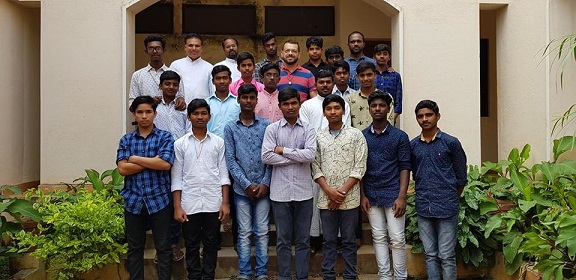
Several appointments for 2020 have been announced - and more news of some of them to come.
However, the list notes that today, November 13th, sees our confrere from India, Parthalomai Paniyadimai, taking up his role as Assistant Parish Priest in Darwin.
Our Australian province is in debt to Asian confreres, from Vietnam and two new appointments from India.
- Parthalomai Paniyadimai has been appointed Assistant Parish Priest of St Pauls’ Parish, Nightcliff, (NT) from 13 Nov 2019. He is also here to gain MSC Parish experience and formation.
- Doan Danh Nguyen Thanh has been appointed Assistant Parish Priest of St Therese’s Parish Wurrumiyanga (NT) from 10 Oct 2019.
\
- Michael Nithan Stephan has been appointed Assistant Parish Priest of St John the Apostle Church Kippax from 22 Oct 2019. Michael is a newly ordained MSC from India. He is here to gain MSC parish experience and formation.
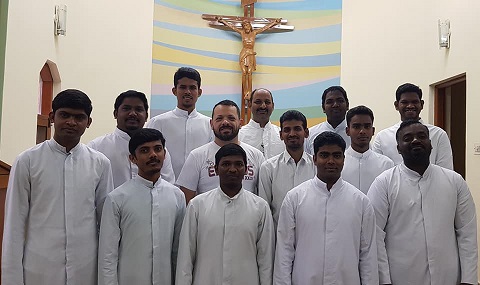
Mark Hanns has been appointed Post Novitiate Directorin Blackburn, Melbourne starting 14 Dec 2019.
- Krish Mathavan has been appointed Parish Priest of St Therese of Lisieux, Moonah from 1 Jan 2020.
- Jonathan Rowe has been appointed as Principal of Monivae College starting 1 Jan 2020.
- Jim Littleton, retired and appointed to Kensington Monastery early next yea.
- John Walker appointed to Kensington Monastery also early next year
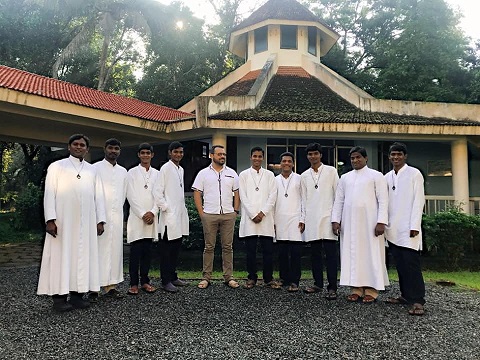
KIRIBATI, MSC ORDINATION AND SILVER JUBILEE
KIRIBATI, MSC ORDINATION AND SILVER JUBILEE
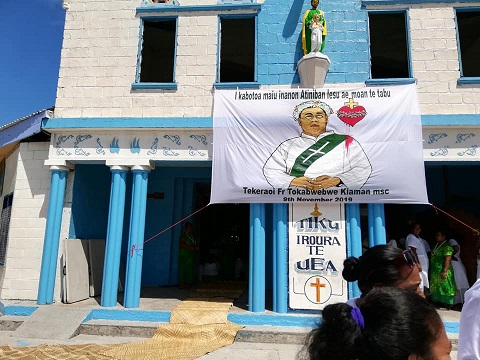
Saturday 9th November 2019, priestly ordination of Fr. Tokabwebwe Kiaman.
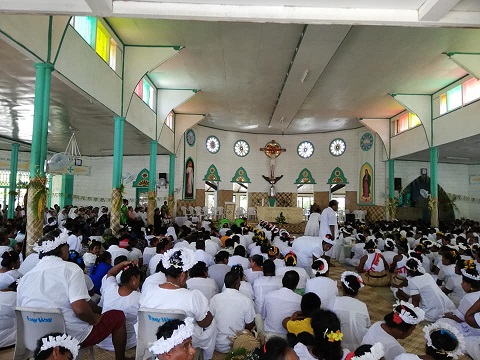
And some striking photos of ceremony and celebration

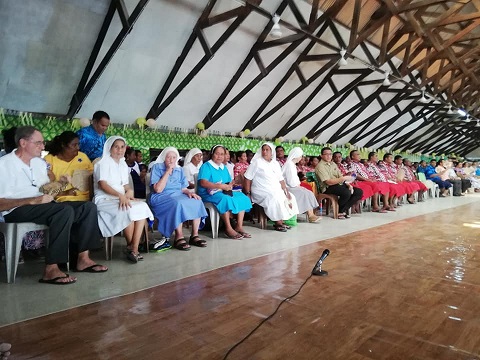
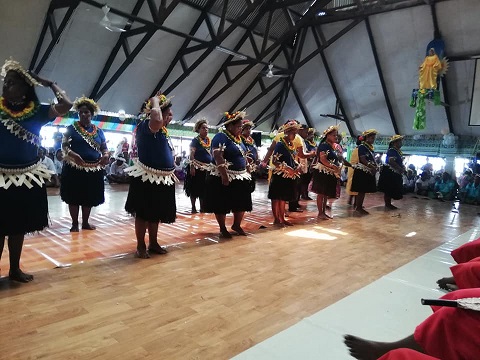
With thanks to our confrere from Kiribati, Robati Tebaiuea MSC
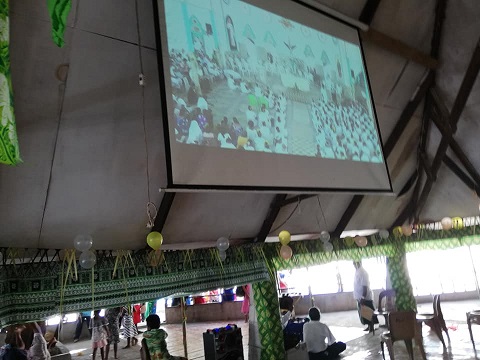
Also celebrating 25 years of ordination for Fr Tatieru Ewenteang MSC
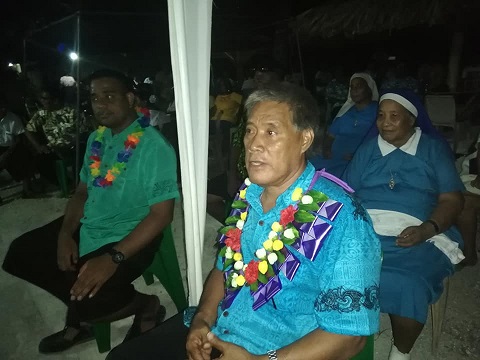
-----------------------------------------------------------------
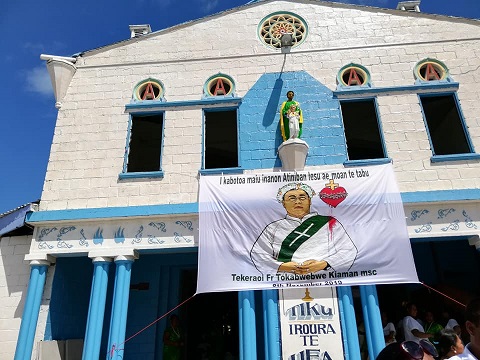
SPIRITUAL DIRECTION, SILOAM AND THE HEART OF LIFE CENTRE
SPIRITUAL DIRECTION, SILOAM AND THE HEART OF LIFE CENTRE.
The Heart of Life Centre for Spirituality and Pastoral Formation is sponsored by MSC Spirituality Services, Australia.
The core program is for formation of Spiritual Directors, Siloam.
In recent years, many of those coming for the Siloam program are from outside Australia, especially from Asian countries.
You many know someone who would be interested in applying for Siloam.
Here is contact information. For the Centre and its programs for 2020, Google www.heartof life.melbourne.
Here is further information.
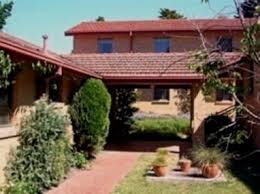
Heart of Life is a centre for spiritual and pastoral formation offering:
- Siloam – full-time or part-time program for the formation of spiritual directors
- Spiritual Leaders Program – part-time program for the formation of spiritual leaders
- Let the Heart Listen – part-time program for people involved in listening to and supporting others in life’s journey
- Supervision of Ministry Program
- Spiritual direction
- Pastoral formation
- Individual or group supervision
- Many faith-based workshops and seminars throughout the year on different themes
– of a few hours, one day or multiple weeks - Professional and personal development for spiritual directors
- Retreats, either in-house or as outreach, and sabbaticals
- A quiet sanctuary for prayer and reflection, set in beautiful surroundings
- Celebration of Mass on Thursdays (except during school holidays)

|
And information especially concerning Siloam |
Siloam: Full-time or Part-time Program for the Formation of Spiritual Directors
Siloam is a program for the formation of competent, experienced spiritual directors. The lecturers and supervisors at Heart of Life foster a discerning, contemplative approach whereby spiritual directors-in-formation become more and more attuned to the movement of God’s Spirit in themselves and in their directees.
The program can be taken over one year full-time or two years part-time (Mondays, 8.45am-5.30pm). There is generally a limit of eight participants in each program.
Students who meet the ‘previous degree’ and other criteria may undertake Siloam as a Graduate Diploma in Spiritual Direction through Yarra Theological Union/University of Divinity. Government Fee-Help is available (for tuition fees) to qualifying Australian citizens.
The Siloam program is recognised by the Australian Ecumenical Council for Spiritual Direction as meeting its standards for the formation of spiritual directors in Australia. The program’s approach to formation is soundly experiential and is based on solid theological, biblical and social sciences theory and praxis. A discerning, contemplative attitude is integral to all seminars and practical work. Regular reflection, prayer time and a commitment to one’s own spiritual direction are essential to the program.
Seminars offered in Siloam:
|
Formation Team:
|
THREE MEN BEGIN THE MSC NOVITIATE AT DOUGLAS PARK.
THREE MEN BEGIN THE MSC NOVITIATE AT DOUGLAS PARK.
The event was a 'Reception into the Novitiate', held at St Mary’s Towers, the traditional home of the MSC Novitiate, in the community chapel, Mitchell House.
They were welcomed, each coming in the door, by their Pre-Novitiate Director, Khoi Nguyen.
A photo of each of them
Dean
Trieu
Daniel
Chris McPhee, Provincial, was present, along with the Director of Formation, Vocations and On-going formation (Frank Dineen) and for the first time, the Director of Post-Novitiate (Mark Hanns).
Peter Harvey-Jackson presented a reflection,
and Barry Smith accepted charge of the young men as the superior of the community.
Some community conviviality followed:
With Len Helm MSC
With Thang MSC and Frank Dineen MSC
ACKNOWLEDGING TONY ARTHUR MSC, 80
ACKNOWLEDGING TONY ARTHUR MSC, 80.

The second 80 birthday in the province in one week.
Tony Arthur came from Sydney but did the last two years of his secondary studies at Chevalier College. After a year in the apostolic school at Douglas Park, he made his novitiate and was professed on the 26th, 1959.
During his studies for the priesthood at Canberra in Canberra and at Croydon, he spent three years completing his Bachelor of Arts studies at the Australian National University, with high distinction and topping the results in some courses. He was ordained in Sydney on July 22, 1967.
His first appointment was teaching at Monivae College but, in 1969, he was appointed to teach philosophy to the MSC students at Sacred Heart Monastery, Canberra. In 1971 he went to St Michaels, Toronto, for further philosophy studies. On his return he taught in Canberra and at the Yarra Theological Union. He also taught at St Pauls National Seminary in Sydney.

However, he was to spend many of the coming years in Papua New Guinea and in Fiji, teaching, serving as director of the seminaries. He also did further studies in Leuven, specialising in church history and developing various courses and lectures on religious life.
In the 2000s and then in the 2010s, he spent time in Rome as the Secretary General of the MSC, contributing to meetings, chapters, historical background, spirituality and theology of religious life, and preparing records of the congregation, the Analecta.

From Rome, he returned to Kensington but is now stationed at Douglas Park and is the local parish priest.
[A sad postscript: Doug Smith died last year at age 78. He would have turned 80 on November 16th. He was the first to die of the MSC group who were together in the same class at Chevalier College, Tony Arthur, Terry Herbert and Peter Malone.]

